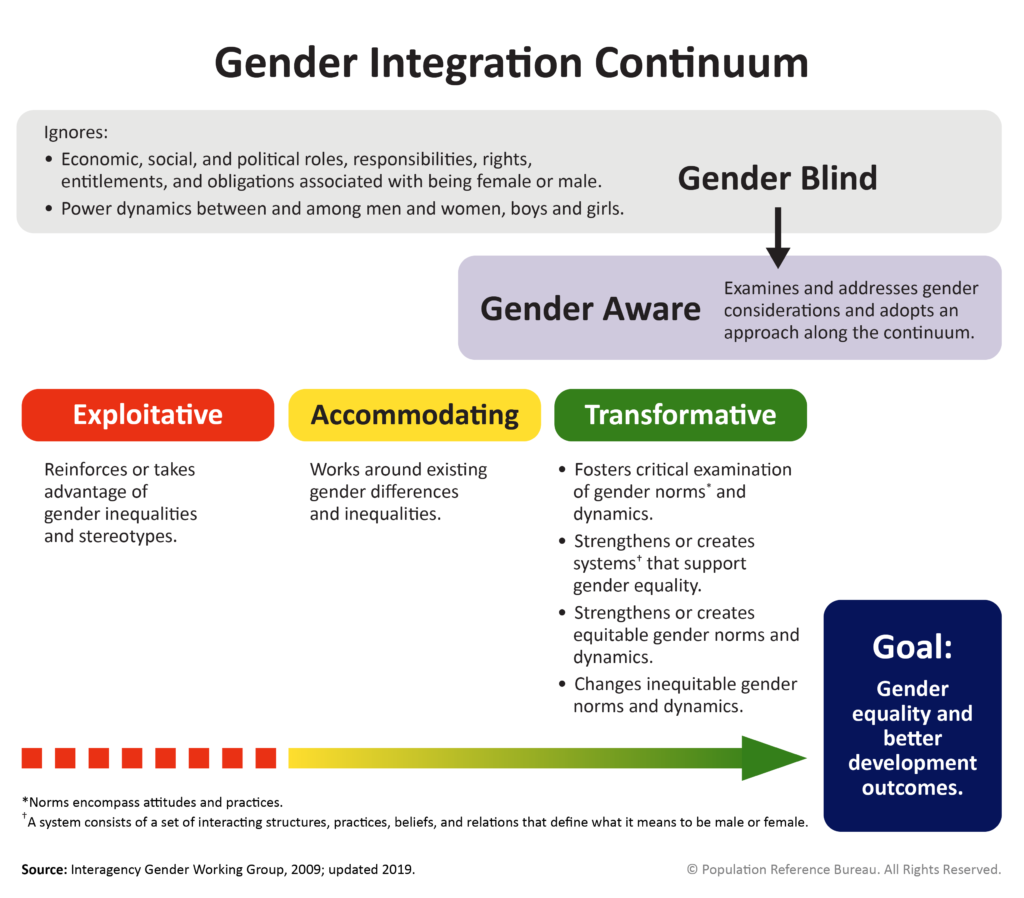Just 20 years ago, if a program was “gender aware” in any way, it was considered a major step forward. Slowly, over the years, the thinking about gender inequities and their impact on health has advanced considerably, and the concepts and vocabulary have become much more nuanced.
The standards for gender interventions are now more ambitious and there is a growing sense that health and development programs can and should contribute to both transforming gender norms and achieving good health and gender equality.
The concept paper, Synchronizing Gender Strategies: A Cooperative Model for Improving Reproductive Health and Transforming Gender Relations (PDF: 532KB), written for the Interagency Gender Working Group, takes gender transformation to the next step, to what has been communally termed “gender synchronization.” Gender synchronization means working with men and women, boys and girls, in an intentional and mutually reinforcing way that challenges gender norms, catalyzes the achievement of gender equality, and improves health. The target audience for this dialogue includes reproductive health and development practitioners and program planners—many of whom are already integrating gender into their programming and are looking for the most effective approaches to achieving better reproductive health and long-term change.
This paper is the result of more than a year of input by development and gender experts—experts who represented diverse philosophical and programmatic approaches to gender work. Some had been at the forefront of early efforts to empower women through health and development efforts, while others had been pioneers in involving men in gender work, but they came together as a community to ponder the strengths and weaknesses of sexual and reproductive health programs that address gender inequities by working with women, with men, or both, and to map out where the field should be going next.
This concept has already begun to take root. A launch of the paper on October 25, 2010, drew many development and health experts who expressed their support for the notion that uniting—or synchronizing—programs that work with men and women is the next logical frontier as we pursue improved health and gender equality.
In addition to providing a definition for the new concept of gender synchronization, this publication provides examples of synchronized approaches that have worked first with women and girls, or first with men and boys, and describes interventions that have worked with both sexes from the start. It also provides examples of new and emerging programs that should be watched in the coming years for the knowledge they may contribute to the implementation of gender synchronization.


